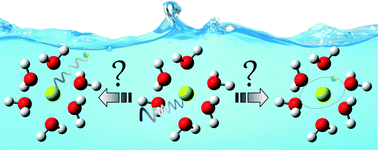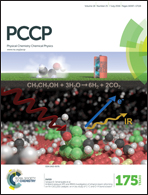X-Ray absorption spectra of microsolvated metal cations
Abstract
Core excited states in clusters or bulk medium are known to undergo a process of internal ionisation, whereby the excited electron delocalises throughout the medium. This delocalisation is visible in the shifting and broadening of lines in X-ray absorption spectra, and it impacts the electronic decay initiated by photoabsorption. In this paper we study the delocalisation of electrons excited from the 1s core orbital of Na+ and Mg2+ ions in microsolvated Na+(H2O)m and Mg2+(H2O)m clusters (m = 1–6) by computing the X-ray absorption spectra and electron distributions in different core excited states. We show that addition of water ligands to the ion leads to more and more pronounced delocalisation of the core-to-valence 1s → 3p and core-to-Rydberg 1s → 4p excitations. Even for the compact 1s → 3p excitation the excited electron is mostly located on the water molecules when the solvation shell is complete. We also found that the degree of delocalisation strongly depends on the cluster geometry and the ionic charge. These results indicate that even in small microsolvated clusters delocalisation of core excited electrons is substantial and will affect the following electronic decay. The accuracy and transferability of our results are corroborated by the good agreement between our XAS spectra of microsolvated Na+ and experimental X-ray absorption spectra of dilute NaCl solutions.


 Please wait while we load your content...
Please wait while we load your content...